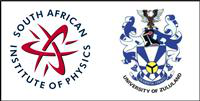Speaker
Level for award<br> (Hons, MSc, <br> PhD)?
PhD
Apply to be<br> considered for a student <br> award (Yes / No)?
yes
Would you like to <br> submit a short paper <br> for the Conference <br> Proceedings (Yes / No)?
yes
Main supervisor (name and email)<br>and his / her institution
Dr CILLIERS Pierre
email: pjcilliers@sansa.org.za
South African National Space Agency
Abstract content <br> (Max 300 words)
This work investigates the performance of the NeQuick model in southern mid-latitudes. The NeQuick is used among others for the European Geostationary Navigation Overlay Service (EGNOS), developed to supplement the GNSSs systems by reporting on the reliability and accuracy of the positioning data. It is used by recommendation of the ITU-R, to compute the estimated TEC presumed along the ray path of the signal from satellite to the GNSS receiver. The performance of the NeQuick is evaluated after it is adapted to the local conditions by ingesting the Fof2 and M(3000)F2 recorded by the means of Ionosonde at Hermanus (34.40S; 19.20E, South Africa). It is then used to compute a theoretical TEC above Hermanus and compared to the observed TEC derived from co-located GPS receiver which belongs to the TrigNet network. The TEC is directly extracted from the data stocked by the Gopi GPS-TEC software. To evaluate the model under different geomagnetic contexts we select three days each of quiet and disturbed magnetically according to different solar activity indicators. The results will be useful to advise users of GNSS equipment.

